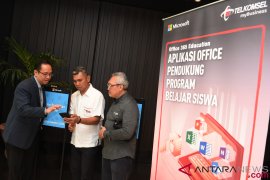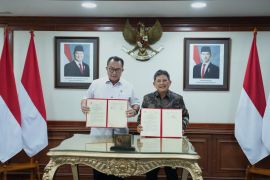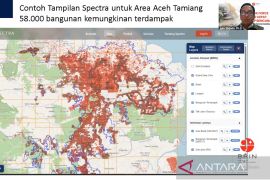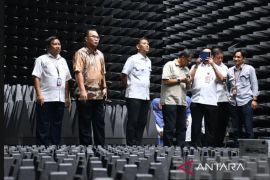The technology predicts disasters based on sea level anomalies due to seismic activity at the ocean bottom or underwater landslides using sea level sensors.Jakarta (ANTARA) - The National Research and Innovation Agency (BRIN) has said that the PUMMA (Inexpensive Device for Sea Level measurement or IDSL) tsunami early detection system installed around Mount Anak Krakatau is operating well.
"The technology predicts disasters based on sea level anomalies due to seismic activity at the ocean bottom or underwater landslides using sea level sensors," head of BRIN's Earth and Maritime Research Organization, Ocky Karna Radjasa, told ANTARA on Friday.
He informed that the data recorded by the system is being sent to the data center of the Meteorology, Climatology, and Geophysics Agency (BMKG) in real-time through the Global System for Mobile Communications (GSM) network.
The IDSL is also equipped with CCTVs for monitoring tsunami waves directly.
The technology has been established based on joint research conducted by the Maritime Affairs and Fisheries (KKP) Ministry, the Indonesian Institute of Sciences (LIPI, which has now been integrated into BRIN), the University of Lampung, as well as an international partner—Joint Research Centre of the European Commission (JRC-EC).
The tsunami detector has also been installed on Sebesi Island in Lampung Province and Marina Jambu Beach in Banten Province.
Tsunami expert and BRIN researcher, Semeidi Husrin, said that during the past three years, the system has worked quite well.
Related news: Beware of possible tsunamis caused by Anak Krakatau: BRIN
To install the system, BRIN and BMKG collaborated with several parties, including the KKP Ministry, the university, the Communication and Informatics Ministry’s Telecommunications and Information Accessibility Agency (BAKTI), state-owned mobile network operator PT Telkomsel, as well as the national tourism lifeguard association, Balawista.
BAKTI has completed the trial for the satellite telecommunications system for the tsunami early detection technology on Rakata Island, Lampung Province.
"With the support of telecommunication infrastructure from PT Telkomsel and BAKTI, the system will soon be operated (on Rakata Island)," the researcher said.
BMKG and the Volcanology and Geological Disaster Mitigation Agency (PVMBG) continue to monitor the activity of Mount Anak Krakatau and the sea level at the Sunda Strait.
Related news: Lampung SAR Agency deploys KN Basudewa to monitor Anak Krakatau
Translator: Martha Simanjuntak, Uyu Liman
Editor: Rahmad Nasution
Copyright © ANTARA 2022












